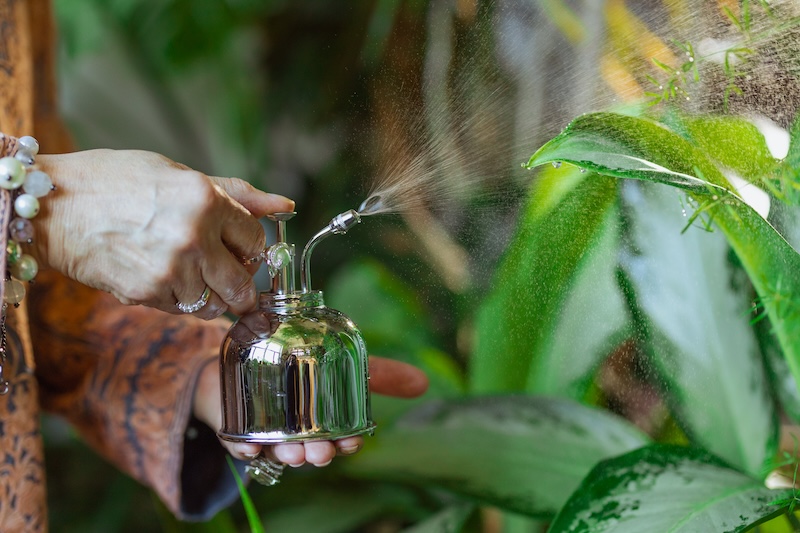Dieffenbachia is a tropical plant that thrives in the lower stories of the jungles of Mexico, and Central and South America. High humidity, moderate temperature, and regular rainfall all work to keep the soil around this plant consistently moist. The stunning and highly decorative leaves of Dieffenbachia require consistent moisture to grow vigorously and remain upright. When growing Dieffenbachia as a houseplant, watering is the one maintenance chore that makes the difference between a thriving plant and a sad plant.

How To Tell If Dieffenbachia Needs Water
Dieffenbachia lets the gardener know when it is time to water by drooping its leaves. At this early stage, the leaves may look sad and lack any rigidness. Over time, the older leaves of an under-watered plant will begin to yellow or develop brown marks at the leaf margins or tips. If the leaves are turning brown and feel crispy to the touch, humidity levels are likely too low.
Overwatering can be just as detrimental to the health of Dieffenbachia as under-watering. Leaves will begin to yellow and droop and feel squishy and bloated. Ensure your pot has drainage holes on the bottom and that it is sitting on a saucer to catch any overflow. Always empty any saucers or pots after watering so that the plant does not sit in water for an extended period. Repot an overwatered plant as quickly as possible using fresh planting mix to keep from further damaging the root system. The planting medium needs to be free draining but also moisture retentive. Typically a potting mix that has a 1:1 ratio of soil to perlite is sufficient.
Dieffenbachia requires regular watering to keep the soil consistently moist year-round. This plant will need more water in the spring and summer when it is actively growing. Plants that are in bright sunlight require watering more often as well. In low light, Dieffenbachia will grow more slowly and can go longer between watering. During the winter, the plant is in semi-dormancy and will need less frequent watering. Allow the top inch of potting soil to dry between waterings for best results.
How To Water Dieffenbachia
Watering dieffenbachia is easy once you understand that this tropical plant thrives in a high-humidity environment year-round. Watering with tap water is okay, but it is better to fill jugs with tap water and allow them to sit overnight so that any chlorine has time to dissipate. Most houseplants prefer rainwater above all, although collection may be difficult depending on where you live.
Water the soil until excess water runs off and into your cache pot or saucer. Leave the plant to soak up any moisture from the bottom of the pot, making sure to empty standing water from the cache pot or saucer after 30 minutes to one hour. During spring and summer, water your plant a minimum of once a week. Adjust the amount depending on the light and humidity levels in the room. During the winter months, restrict watering and allow the soil to dry slightly between waterings. Watering once every 10-14 days is typical during this time.
Mist the air around your Dieffenbachia daily to raise humidity levels. In very dry climates or houses with high temperatures, cool mist humidifiers can be used to ensure that your growing space has sufficient humidity levels. Placing a layer of LECA or river gravel in the pot saucer is an easy way to make a DIY humidity tray for the plant. When you water, the saucer will fill with water. The rocks keep the plant's roots out of standing water so that the moisture can evaporate naturally, temporarily raising the humidity level around your plant.

Dieffenbachia Watering Tips
- Keep the soil consistently moist
- Overwatering is as detrimental to the plant's health as underwatering
- Keep humidity levels around the plant at 50% or more year-round
- Water with rainwater or filtered tap water
- Reduce watering frequency during the winter months or if your plant is in low light
 |
Author Robbin Small - Published 11-29-2023 |
